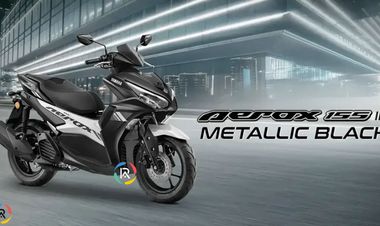GST Cut on Cars and Bikes Likely Soon: What Buyers Need to Know
Car and bike buyers in India may soon benefit from a proposed GST cut from 28% to 18%, making vehicles more affordable this festive season.
3632 views | Date: August 19, 2025
Delhi-Car and bike buyers in India may soon have a compelling reason to cheer this festive season, as the government is reportedly considering a significant reduction in the Goods and Services Tax (GST) on automobiles. According to sources, the Finance Ministry has already forwarded its recommendation to the GST Council, proposing a simplified two-slab tax structure of 5 percent and 18 percent, replacing the current four-tier system. If approved, this would directly impact the prices of passenger vehicles and two-wheelers, making them more affordable for the masses and providing a strong boost to demand in the auto sector.
At present, passenger vehicles attract a GST rate of 28 percent, with an additional compensation cess ranging from 1 percent to 22 percent depending on the size, body type, and engine capacity of the vehicle. This means that for certain cars, the effective tax outgo can rise to nearly 50 percent of the total cost. Two-wheelers also fall under the 28 percent GST slab, although entry-level and mid-segment motorcycles up to 350cc do not carry any cess. Larger bikes with engines above 350cc, however, are levied an additional 3 percent cess. Electric vehicles, in comparison, already benefit from a much lower GST rate of 5 percent with no cess, which has been a key driver of early EV adoption in India.
If the GST Council accepts the new proposal, the current 28 percent slab on conventional vehicles would be replaced by 18 percent. This change would substantially reduce the cost of mass-market products such as hatchbacks, compact SUVs, commuter motorcycles, and scooters, which together account for the bulk of India’s auto sales. For car buyers, the revised rate would ease affordability pressures across entry-level and mid-range segments, while premium vehicles would continue to carry cess but still benefit from a lower base GST. For bike buyers, the impact could be even more direct and immediate. With two-wheelers being the most common form of personal transport in both rural and urban India, especially in the commuter segment, a reduction from 28 percent to 18 percent would make motorcycles and scooters considerably cheaper. Even premium motorcycles above 350cc would see improved pricing, though they would remain subject to cess.
For the electric vehicle market, the proposed reform will not directly alter the current tax benefits, as EVs already enjoy the lowest GST slab of 5 percent with no compensation cess. However, the simplified two-slab structure could indirectly encourage faster EV adoption, as the pricing gap between internal combustion engine vehicles and EVs narrows, making the latter more attractive to first-time buyers.
Industry experts believe the biggest beneficiaries of this policy shift would be mass-market consumers in India, who form the largest segment of buyers in both passenger vehicle and two-wheeler categories. For OEMs and dealerships, the timing of this move could not be better, as it would align with the festive season when demand traditionally peaks. A lower GST burden would not only boost volumes but also restore momentum in a market that has faced price pressures due to regulatory costs and commodity volatility in recent years.
If implemented, the GST cut could transform festive-season buying into one of the strongest growth phases for India’s automobile industry in recent memory. With improved affordability, enhanced financing options, and a wider choice of models in both conventional and electric categories, car and bike buyers across the country are likely to see the most value this season.
Leave a Response
You must be logged in to respond.
Responses
No responses yet. Be the first!






